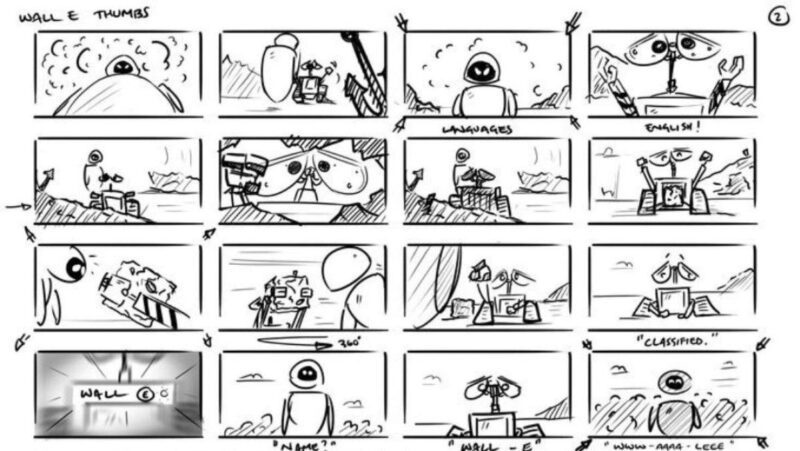If you’re looking for a way to stretch your dollar further, earning cashback at StoryBoards is a fantastic option. In today’s world, where shopping has become an essential part of many people’s lives, the ability to receive a little something back from your purchases is a welcomed perk. Not only can cashback help you save money in the long run, but it allows you to treat yourself guilt-free while enjoying a variety of products or services. So, let’s dive in and see how you can earn cashback while shopping at StoryBoards!
StoryBoards is an innovative platform that brings creativity and storytelling to the forefront. They offer a range of services and products designed to help individuals and businesses bring their ideas to life, whether through custom-designed boards, art supplies, or digital tools. Their focus on quality and user-friendly solutions makes them a go-to destination for aspiring creators, educators, and anyone looking to explore their imaginative side. Unlike traditional discount methods or coupon codes, StoryBoards provides a unique experience where you can purchase meaningful items that inspire creativity while simultaneously earning rewards for your spending.
Earning cashback at StoryBoards is as easy as using a cashback app like Rakuten. First, create an account on the Rakuten platform, where you can browse participating retailers like StoryBoards. When you’re ready to shop, simply click through to StoryBoards from the Rakuten site, and make your purchase as usual. A percentage of your total spend will automatically be credited to your Rakuten account, allowing you to earn cashback without needing to fuss with discounts or coupon codes. After a predetermined period, you can cash out your earnings, turning your creative purchases into real savings over time. It’s a win-win situation where you get to enjoy everything StoryBoards has to offer while also putting some money back in your pocket!
Q&A
**Q&A: Understanding Storyboards**
**Q: What exactly is a storyboard?**
A: A storyboard is a visual representation of a story, typically laid out in a sequence of images or illustrations. It serves as a planning tool for filmmakers, animators, and other content creators to depict how a story will unfold, scene by scene. Think of it as a comic strip version of a script, where each panel captures a moment in the narrative.
**Q: How are storyboards used in different industries?**
A: Storyboards are versatile and can be found in various fields. In film and television, they help directors visualize scenes before filming begins. In advertising, they outline how a commercial will flow. In video game design, they depict gameplay experiences. Even in education, teachers use storyboards to map out lessons or projects.
**Q: What components are typically included in a storyboard?**
A: A storyboard usually comprises a series of frames or panels, each containing a drawing or image paired with notes that convey important details such as dialogue, action descriptions, camera angles, and emotional tones. This combination provides a clear guide for execution.
**Q: Do you need to be an artist to create an effective storyboard?**
A: Not necessarily! While having artistic skills can enhance the visual appeal of a storyboard, the primary goal is to communicate ideas clearly. Simple sketches, stick figures, or even written descriptions can suffice, especially in the early stages of conceptualization.
**Q: What are the benefits of using a storyboard?**
A: Storyboards foster clarity and organization during the creative process. They help identify pacing issues, visualize transitions, and facilitate communication among team members. By providing a structured overview, storyboards can save time and resources down the line, ensuring everyone is on the same page.
**Q: Can storyboards evolve throughout a project?**
A: Absolutely! Storyboards are often living documents, meant to evolve as ideas develop. Creative projects frequently undergo revisions, and a storyboard can be updated to reflect new insights or changes in direction, ensuring it remains relevant throughout the production process.
**Q: What tools can be used to create storyboards?**
A: Storyboarding can be accomplished using a variety of tools. Traditional pen and paper work fine for many, while software applications like Storyboard That, Adobe Photoshop, or even dedicated storyboard apps provide templates and features to facilitate the process. Digital tools can also make collaboration easier.
**Q: What tips do you have for someone creating their first storyboard?**
A: Start simple! Focus on the main events of your story without getting bogged down in detail. Keep your frames consistent in size and layout. Don’t hesitate to use annotations to provide context. Lastly, remember that the storyboard is a tool for storytelling — so let your creativity shine through in every frame!
**Q: What are some common mistakes to avoid when storyboarding?**
A: One common mistake is overcrowding the frames with too much detail, which can overwhelm rather than inform. Another is failing to align the visuals with the narrative arc, leading to disjointed storytelling. Lastly, neglecting to collaborate with team members can lead to misunderstandings and misinterpretations of the story.
Through this guide, we hope you have a clearer understanding of storyboards and their invaluable role in the storytelling process. Whether you’re creating a film, crafting a lesson plan, or designing a video game, storyboards can help you bring your vision to life!


